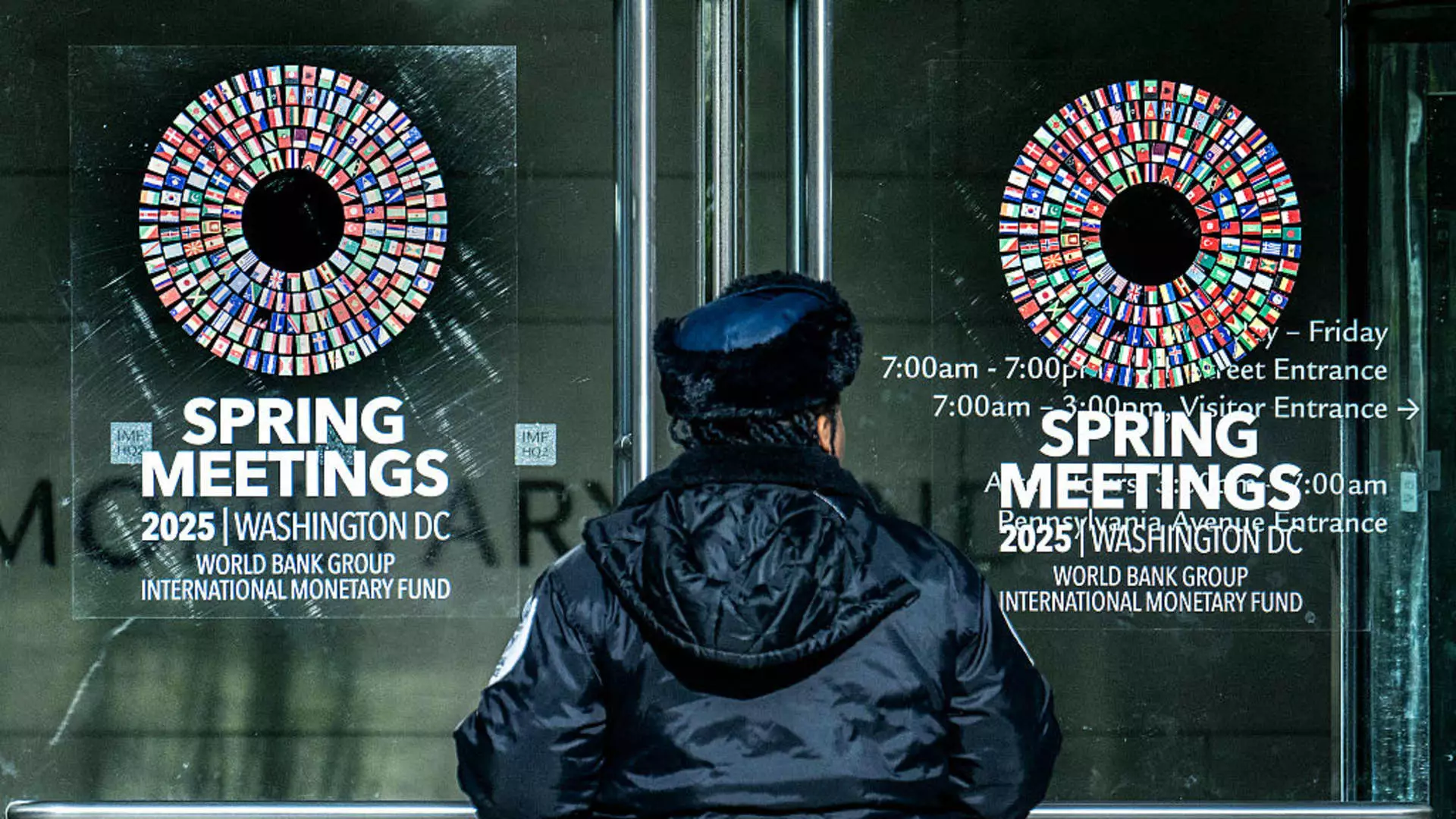The recent downgrade of growth forecasts by the International Monetary Fund (IMF) paints a disconcerting picture for major Asian economies, marking a pivotal moment that merits serious reflection. Forecasts for 2025 have taken a sharp downturn; China’s GDP is now projected at a meager 4%, with India slightly better off at 6.2%, down from earlier optimistic expectations. This isn’t merely an economic recalibration—it’s a glaring indictment of a tumultuous geopolitical landscape rife with uncertainty and strife. What lies beneath this statistical sorrowscape is an intricate web of trade tensions that continue to spiral out of control, particularly exacerbated by the aggressive policies of the United States.
Trade Wars: The Invisible Hand of Economic Manipulation
Trade tensions, primarily stemming from the escalating tariffs imposed by the U.S., are creating fissures in Asia’s once-thriving economic fabric. The IMF characterizes these tariffs as “a major negative shock to growth,” but that’s an understatement of epic proportions. The unpredictability brought about by these measures is not just economic turbulence; it is a fundamental threat to the very structure of global commerce. Unjustly, nations that once thrived under the banner of globalization are now forced to navigate a minefield of retaliatory tariffs, straining diplomatic ties and economic partnerships. The trade spat with China, featuring eye-popping tariffs that can reach 245% on select imports, showcases a troubling paradigm where economics blends dangerously with politics.
The Ripple Effect Across the Region
The IMF’s cuts to growth forecasts aren’t isolated observations—they are the echoes of a continent-wide malaise. Japan, still struggling to shake off the stagnation of previous decades, sees its growth prospects slashed from 1.1% to 0.6%. This stagnation is alarmingly consistent with its aging population and demographic challenges but is inevitably worsened by external pressures. Even India, often touted as a beacon of hope in the economic landscape, faces setbacks as its growth forecast aligns downward amid a deteriorating global environment, with enigmatic tariffs complicating prospects for foreign investment.
The outlook is not merely alarming; it represents a critical failure of leadership. The leaders of these nations, particularly in the context of U.S.-China relations, must grapple with the uncomfortable truth that their economies are being held hostage by whims of foreign policy that are entirely detached from the intricacies of their own economies. The ongoing trade negotiations have left nations like Japan and India in the awkward position of having to appease a capricious U.S. administration while trying to maintain their own economic integrity.
The Lost Art of Diplomacy
Into this maelstrom of uncertainty steps a hesitantly conciliatory approach from Japan and India. Japan’s willingness to send trade delegations illustrates an earnest desire to mend fences with the U.S.; however, empty negotiations rarely fill bellies or bolster GDP. The word “regrettable,” employed by Japan’s top negotiator in response to U.S. tariffs, echoes a deep-seated frustration that treaties and agreements are rapidly becoming relics of a more stable era. Similarly, India’s Prime Minister Narendra Modi is engaged in shaking hands, but without substantive agreements, such gestures risk becoming little more than exercises in futility.
This dance of diplomacy falls tragically short of what global leadership should embody. Instead of robust negotiations yielding mutual benefits, we’re witnessing a series of ineffective encounters steeped in the dread of retaliatory measures that threaten to undo decades of economic progress. The necessity for genuine, robust dialogue has never been more critical, yet it remains grossly underappreciated.
A Call to Action for Progressive Leadership
In this fragmented economic landscape, what’s needed is an infusion of progressive leadership. Leaders in these Asian powerhouses must spearhead a movement towards multilateralism, pushing back against the tide of protectionism that is fraying global ties. To truly utilize their economic might and steer clear of ignominious forecasts, their governance must reflect forward-thinking policies rather than reactive disappointments. This is a wake-up call not just for Asian economies, but for global leadership as a whole; the economic future hinges on the realization that cooperation, not competition, will drive prosperity.
As ominous as it appears today, the disaster looming in our growth forecasts could, with the right approach to policy and diplomacy, transform into a structure upon which we can build resilient and interconnected economies. The choice remains in the hands of our leaders; let’s urge them to choose wisely.

Leave a Reply